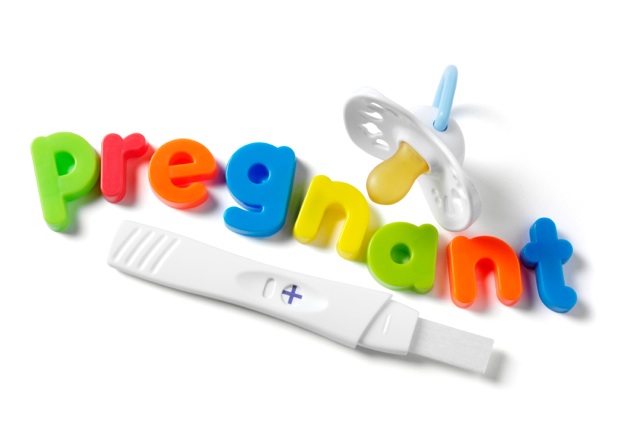SingaporeMotherhood | Pregnancy
May 2012
Your 9-Month Pregnancy Guide

“My mouth seems to fill up with saliva all the time, and swallowing it makes me queasy.”
“I’m in the bathroom every half hour. Is it normal to be urinating this often?”
“I’m tired all the time. I’m worried I won’t be able to continue working.”
Don’t worry, there’s nothing actually wrong with the women who’re saying the above. In fact, they are normal and healthy women who are pregnant. If you have determined that your missed period is indeed a sign of a foetus developing within your womb, congratulations, and welcome to your pregnancy and the nine months which breathe life into your baby.
[banner][/banner]
Month 1 (approximately Weeks 1 to 4)
How you’re feeling: An increase in hormonal activity leads to feelings of nausea, a change in tastes and a preference for certain foods. You may have a metallic taste in your mouth, and you feel tenderness in your breasts. You may need to empty your bladder more frequently and notice an increase in normal vaginal discharge. You also experience mood swings, tiredness, and even dizziness.
What’s going on in there: Obstetricians count the age of your pregnancy by weeks. But since the counting really begins from the first day of your last menstrual period – about two weeks before your ovulation-cum-conception happens – the embryo, which is the cause of all these changes, starts life at two weeks.
What to do: Schedule an appointment with your obstetrician. Stop smoking, and limit alcohol and caffeine intake. Stay away from unpasteurised soft cheese such as dolcelatte, camembert, and brie, undercooked meats and soft-boiled eggs to avoid e-coli and salmonella infections. Be mindful of the fish you eat, because shark, swordfish, tilefish, and king mackerel have high mercury levels. If you are a working woman, read your company’s maternity leave policy so that you are well informed about your rights.
Month 2 (approximately Weeks 5 to 8)
How you’re feeling: The waves of fatigue and morning sickness make it a challenge to eat healthily. Keep high-fiber carbohydrate snacks, such as granola bars or bananas handy.
What’s going on in there: The embryo, which can now be called a foetus, meaning “young one”, has all its internal organs in place, all the major joints visible, and a spine that can move. By Week 6 the heart starts beating. On Week 8 it is about 2.5 cm long and 3 g in weight.
What to do: You may want to talk to your doctor about the type of birth you would like to have, and start to find out about the antenatal classes available near you. Eat small meals throughout the day, and do gentle exercises such as yoga and swimming (with your doctor’s consent).
Month 3 (approximately Weeks 9 to 13)
How you’re feeling: By Week 12 you are at the end of your first trimester and the nausea and frequent urination should have eased. Your heart, lungs, and kidneys are working harder and your bowel slows down. Constipation may start to become a problem. The muscle at the entrance of your stomach relaxes as progesterone level increases, causing a reflux of stomach acid into the esophagus and creating the burning sensation of heartburn.
What’s going on in there: The baby’s mouth, nose, ears, eyelids are developing. His limbs, hands and feet are growing rapidly. Although the sex organs are now defined, your doctor will probably wait a few more weeks before confirming your baby’s gender. Towards the end of the first trimester, the baby can swallow, his nerves and muscles are working, and he can move spontaneously. By Week 13 he is about 8.5 cm and 28 g, and fully formed.
What to do: Avoid a low-salt diet as you need sodium to retain fluid in your body. Consume less of rich, high-fat and spicy food to ease heartburn, and more of high-fiber diet with plenty of fruits and vegetables, and lots of water to ease constipation.
Month 4 (approximately Weeks 14 to 17)
How you’re feeling: Welcome to your second trimester! About 6 kg of weight will be gained during these 12 weeks. Exercise your pelvic muscles to strengthen them and reduce the risk of urine leakage whenever you cough or sneeze in later months.
What’s going on in there: From here on, the baby mainly grows in size. Major muscles now respond to brain stimulation. The wrists and elbows can bend, the fingers can curl and make fists. Fine hair (lanugo) all over the body, eyebrows and eyelashes start to grow. He is now about 16 cm and 135 g.
What to do: Watch out for sudden swelling of your hands, feet or face, as this could be a sign of pre-eclamptic toxemia or pregnancy-induced hypertension. Consult your doctor immediately if this happens.
Month 5 (approximately Weeks 18 to 22)
How you’re feeling: By now you can feel your baby’s movements as butterfly-like flutters. Your breasts may produce colostrum, the first milk, and your gums may bleed.
What’s going on in there: The baby’s teeth are forming and hair is growing on his head. His movements can now be felt, and he reacts to touch and pressure. His nostrils open up, his lungs, digestive system and taste buds have start to function. On Week 20, his brain undergoes the first period of rapid growth.
What to do: Eat vegetables regularly as what you eat from now on can influence your baby’s future taste preferences. Take more calcium. If you are lactose-intolerant, milk-substitutes such as yoghurt, cheese, and ice cream are fine. If you plan to engage a doula for your birth, engage one now.
Month 6 (approximately Weeks 23 to 27)
How you’re feeling: Hot and sweaty, due to your increased blood supply. Your heart and lungs are doing 50 per cent more work. Some women may experience rib pain as the baby presses upwards against the ribcage. You may experience water retention.
What’s going on in there: Your baby’s skeleton transforms from cartilage to bone. He can now open and close his eyes, and differentiate between light and dark. His breathing system has matured, and you can feel it when he hiccups. He starts to behave like a real baby, sucking on his thumb. From Week 24 onwards, his life is protected by law.
What to do: You may feel some back pain as the curvature of your spine has changed to counterbalance the extra weight from your baby. The pain worsens if you stand or sit a lot. Maintain good posture with a straight – not bowed – back. If you have to sit for a long period of time, support your back with a small cushion. Avoid tight-fitting clothes and shoes. Try to rest with your feet up as often as possible.
Month 7 (approximately Weeks 28 to 31)
How you’re feeling: Welcome to your last trimester! As you become bigger, you may notice stretchmarks appearing on your stomach and thighs. Some women may experience lower back pain caused by the enlarging abdomen and loosening of the pelvic joints. Painless Braxton Hicks contractions may start to become noticeable.
What’s going on in there: From now, your baby will be putting on weight fast, and storing fat. His body is covered in thick grease (vernix). He can start to hear loud sounds at medium to low pitches, like the rumble of a truck, and his mother’s voice. Be careful not to expose yourself to chronic loud noise as babies’ hearing is most easily damaged during the last trimester and the first six months of life. By Week 28, he is about 37 cm and 900 g, and has an 80 per cent chance of survival if born prematurely.
What to do: Start seeing your doctor fortnightly. Consume adequate protein as a shortage of protein can restrict baby’s brain and body development.
Month 8 (approximately Weeks 32 to 35)
How you’re feeling: Your lower ribcage may feel sore and you may need to urinate more often as the uterus expands, putting pressure on your internal organs and diaphragm. Your navel will look flattened and a dark line (linea negra) may be visible down the middle of your abdomen. Don’t worry about this, it disappear after you have given birth.
What’s going on in there: By Week 32, the baby is about 40.5 cm and 1.6 kg. He may already be facing head-down and should stay that way until his birth. Almost all babies born after 34 weeks survive.
What to do: If you are prone to varicose veins, it wearing support pantyhose may help. Some mothers get swelling ankles. Use a footrest when sitting, and do not cross your legs. Apply cold compresses to reduce swelling.
Month 9 (approximately Weeks 36 to 40)
How you’re feeling: Your tummy will drop down as the baby descends into your pelvis. You can breathe more easily, but more pressure on your bladder means you may have to visit the ladies more often!
What’s going on in there: By Week 36 the baby is around 46 cm and 2.5 kg, has full length nails, and up to 5 cm of hair on his head. He puts on about 28 g a day and is not moving much as he does not have that much space anymore. He is experiencing the last bout of rapid brain growth on Week 36. By Week 40 the vernix and lanugo are almost all gone. He produces cortisone, the hormone which prepares his lungs for the very first breath.
What to do: You now have weekly or daily appointments with your doctor. Consume potassium-rich foods for baby’s brain growth. This can be found in avocado, banana, and all kinds of beans. Your baby can arrive any day between Week 38 and 42. Prepare for the days after labour by stocking up food in the freezer and necessities for the baby. Your breasts have stopped enlarging, so if you plan to breastfeed now is the time to buy (at least two) front-opening nursing bras. Pack your hospital bag. Breathe, and get ready to welcome your Baby into your life.
All content from this article, including images, cannot be reproduced without credits or written permission from SingaporeMotherhood.
Follow us on Facebook, Instagram, and Telegram for the latest article and promotion updates.






